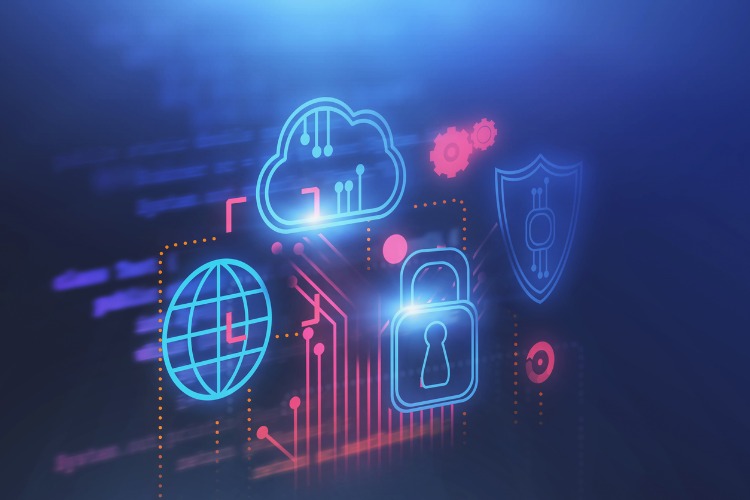12 Hybrid Cloud Security Threats That You Can Fix
When it comes to having a safe and secure multiple-cloud architecture, you’ll need a hybrid cloud security mindset, which focuses on securing data wherever it may be. When done correctly, a hybrid cloud (private and public) can help make your company more productive while saving money.
However, a secure hybrid cloud requires a well-thought-out plan, and plenty of focus on encryption and data access control.
With that said, here are 12 of the most tedious security threats in hybrid cloud security that you can actually fix.
- Not Managing Identity, Credential, And Access
“Occasionally, emails from various accounts – especially from social media accounts – will ask you to reset your password,” says James Bigby, a tech blogger at Paper Fellows and Lia Help. “Not resetting your password may cause a security breach. Plus, not everyone takes advantage of multi-factor authentication.”
There are a few ways to fix this problem:
- Utilize multi-factor authentication, which acts as multiple layers of protection for end users.
- Isolate users to user-friendly information only.
- Customers’ Lack Of Visibility And Control
The last thing organizations want, when transitioning assets/operations to the cloud, is to lose some visibility and control over those things. Even when using external cloud service providers (CSPs), said providers might not be 100% reliable.
Depending on the CSP used, ensure that all responsibilities are met, when monitoring and analyzing sensitive data.
- Breaches In Data
Data breach is nothing new. In fact, more organizations are becoming aware of such breaches. However, investments (pricey or not) in security isn’t enough to prevent data breaches. Companies like Target Brands, Inc. and JPMorgan Chase – despite their popularity, and their net worths – have fallen victim to data breaches over the recent years.
Therefore, organizations need to have practice prevention that includes:
- Perimeter and Internal Firewalls
- Data-at-Rest Encryption
- Multi-factor Authentication
- Not Maintaining And Demonstrating Compliance
Hybrid clouds must stay within compliance parameters, no matter what. However, with a hybrid model, it’s hard to maintain and demonstrate compliance, because data moves back and forth.
So, you’ll have to coordinate the two clouds.
- Ensure that both clouds are working together, as they stay in compliance.
- Both clouds must meet industry standards for data security.
- Compromised Internet-Accessible Management APIs
CSPs expose application programming interfaces (APIs) that customers use to manage and interact with cloud services. These APIs manage, orchestrate, and monitor assets and users; and, they contain the same software vulnerabilities as that of an operating system. Though, since they’re Internet-enabled, exploitation might occur.
Therefore, protection must be enabled with APIs, making it harder for attackers to compromise organization assets, and attack other CSP customers.
- Lack Of Redundancy
Poor data redundancy leads to corrupted data. Redundancy creates backups, should one copy get compromised.
Redundancy can be done in three ways:
- Have multiple data centers from one cloud provider
- Enable redundancy from your public cloud provider
- Enable redundancy from a hybrid cloud
- Vulnerable Systems
System vulnerabilities refer to any exploitable bugs or features that hackers use to corrupt a system or program. Very old vulnerabilities are worse than new ones. Consequences include:
- Data loss
- Lack of service
- Data breaches
- Heavy recovery/repair expenses
Instead, keep your systems and software up-to-date with the latest security updates.
- Attacks From Malicious Insiders
Sometimes, malicious actors can sneak inside your account without you knowing it, and steal sensitive data.
First, protect your account. Then, do the following:
- Part from your organization on good terms, once you end a business relationship.
- Revoke any access privileges.
- Restrict access to more sensitive data.
- Enable internal firewalls for individual users and apps.
- Incomplete Data Deletion
When you delete certain data, it has to be deleted entirely, because chances are, malicious insiders might go in and use that data against you. Depending on what CSP you use, you have to educate yourself on what their deletion procedures entail.
- Stolen Credentials
A CSP administrator should have access to the CSP network, systems, and application of the infrastructure, which allows the administrator to have administration rights more than one customer and supports multiple services.
- Lost “Stored” Data
“Although the cloud can ensure that data is ‘stored,’ the truth is, ‘stored’ cloud data can be lost for a number of reasons,” says Ella Walker, a cloud expert at OXEssays and State Of Writing.
These include:
- Malicious attacks
- Accidental data deletion made by a CSP, or physical catastrophes
- Losing the encryption key while uploading data to the cloud
- Inadequate understanding of a CSP's storage model
“Take all data into account before and after uploading it to the cloud,” adds Walker. “Plus, implement a CSP storage model that makes you prepared for any future incident.”
- No Authentication Or Identification
Without authentication or identification, security management will fall short in a hybrid-cloud environment. To fix this: Cybersecurity must be mutually shared between the cloud provider and enterprise staff.
Conclusion
Remember: CSPs use a shared responsibility model for security. Plus, effective cloud security depends on how much the consumer knows about the topic, and their ability to resolve a problem whenever one arises. Otherwise, lack of awareness will only breed security incidents.
As you avoid these 12 threats in cloud-based security, you’ll have plenty of security to protect your cloud data and systems.
Katherine Rundell writes and edits at Academic Writing Service and Do My Coursework. As a professional writer, she has written articles on various topics, creating informative content. She is a blogger at Write My Paper for Me service.

